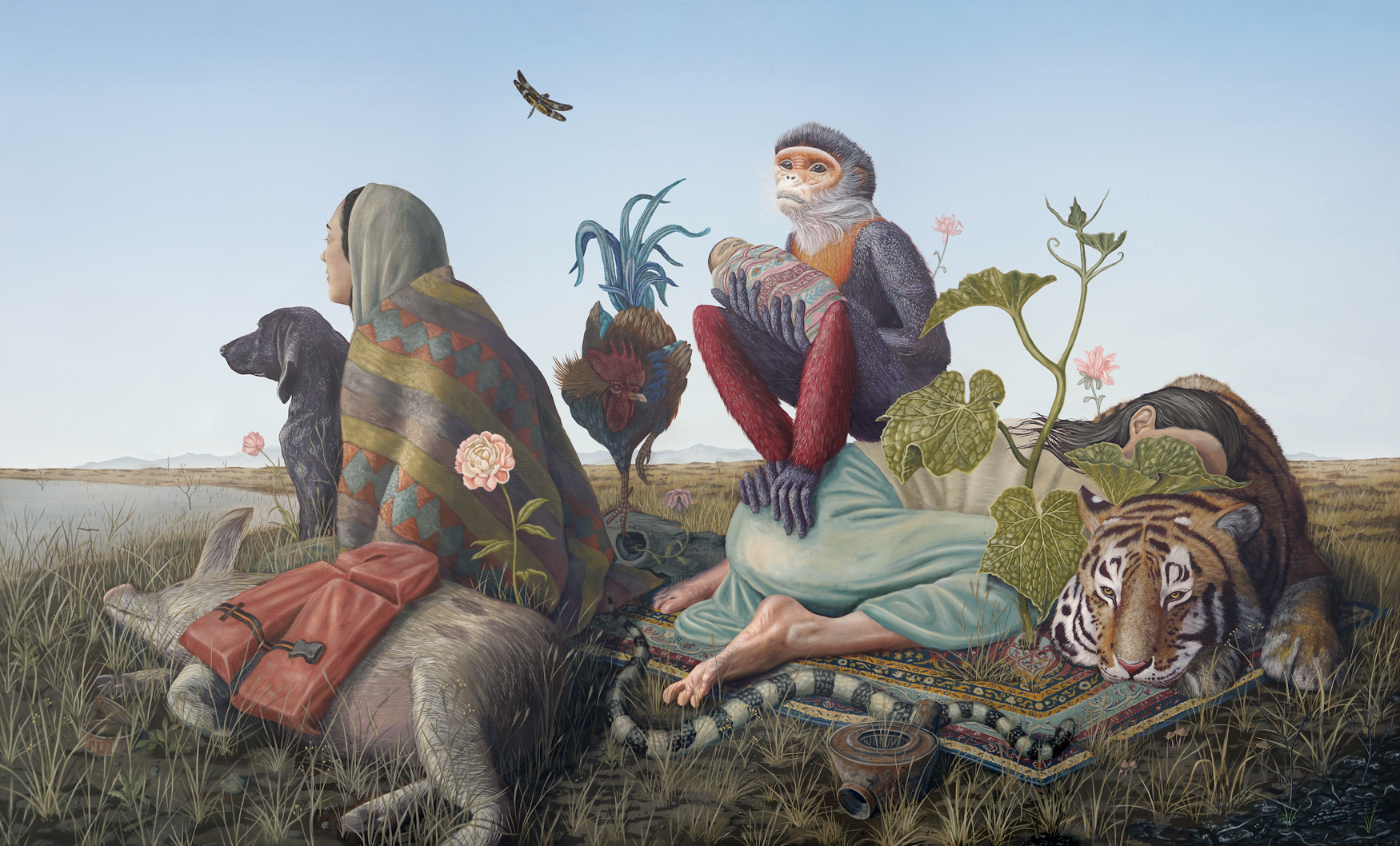Aaron Glasson is an eco artist that we've always found truly inspiring on many levels. He is a New Zealand born Artist now based in the Mojave Desert. Since completing his degree in Art and Design at the Auckland University of Technology in 2005 he has been exhibiting and creating public art works internationally. His diverse body of work includes participatory installations, murals, paintings, illustration, furniture, sculpture, assemblage and film. He has also worked extensively in the public sphere with numerous environmentalism efforts, community organizations and educational institutions, using his art as tool for connection and learning.
Aaron incorporates natural materials into all of his work including Natural Earth Paint's organic canvas, Eco-solve, earth and mineral pigments, and mixing tools like the glass muller.

Where did you grow up and did that environment affect your early introduction to creativity or your art process? When did you first become interested in making art?
I grew up in the countryside on the North Island of New Zealand, Te Ika-a-Māui. I knew I was always interested in art making and thankfully my parents encouraged that. Creativity has always come out in different ways for me and if I think back to my childhood it was not only drawing and painting but also building things out of junk behind my Dad's garage out of sticks in the forest, inventing things, and just playing. I think most kids have intense creativity, and I was so lucky to have parents that let me explore that outside in the natural world. My process as a kid was building things out of whatever was at hand and I still love that kind of work. It’s still a big part of my art process.

What is your biggest inspiration source when creating a new piece?
It’s difficult to name one thing but to put it simply, a feeling. This may come from an experience, seeing a landscape, or even someone else's work.

You’ve worked with ocean conservation organizations, do you have a connection with the ocean in your art process?
I worked in ocean conservation for a long time, mostly with PangeaSeed and Sea Shepherd. I grew up spending a lot of time in and around the oceans and thanks to that had a deep interest in marine ecology and conservation. I was the Creative Director of PangeaSeed and during that time a lot of work reflected my concerns for the oceans. In recent years I’ve moved away from the coast and my work is less about that. Though I think if I ever were to live by the sea again it will appear again in my work.

How do you incorporate your passions for ecology, connectivity, and community engagement into your art?
In regards to ecology it used to be in the subject matter of my work, though now I work in abstraction it’s expressed through the materials ...exploring non-toxic and natural materials. Also, by attempting to convey those feelings I experience in the wilderness via the work. Ideas around connectivity and community engagement vary from work to work but simply put and most of all I’d like it to be through active participation with the work itself by the viewers.

Do you have any tips or tricks for other artists on “greening” your studio, reducing waste, using natural materials, or reducing toxic supplies?
Experiment, ask questions, research older ways of doing things and new technologies, and seek out brands doing it better.

When did you first try natural art supplies and why?
I first started really diving in around 2019 and it was really because I wanted to simplify my art practice. Buying conventional supplies gave me a choice paralysis so at an art residency in Utah I turned up with no materials and simply wanted to make work with what I could find. I made some paintings with mud I found and sculptures with “junk.” That time was a huge turning point for me.


Did a shift in materials change anything in your art-making experience or final results?
Absolutely, it's more about simplification and letting the materials do some of the work now.

Is there one piece of art that you’ve created that was a profound experience or marked a turning point in your art? Where can our audience see more of your work?
I’d say the mud paintings mentioned earlier. Painting with mud it’s really hard to render so it forced me to paint flat and abstract for the first time in my life.
www.aaronglasson.com and @aaronglasson






